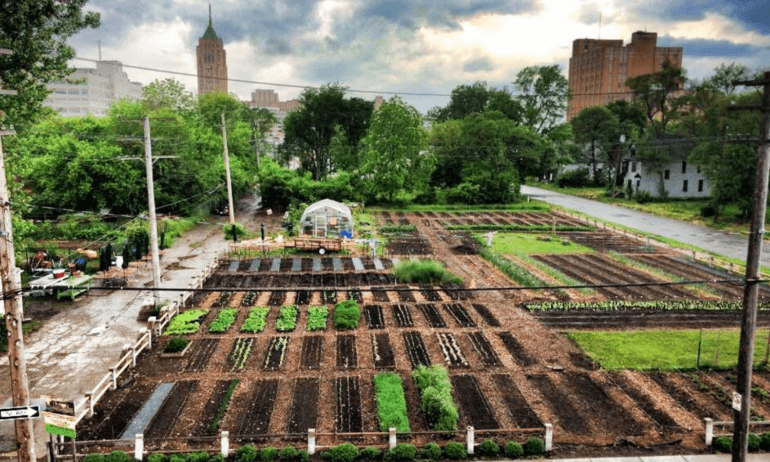Not known Incorrect Statements About City Blooming
Not known Incorrect Statements About City Blooming
Blog Article
An Unbiased View of City Blooming
Table of ContentsNot known Factual Statements About City Blooming A Biased View of City BloomingHow City Blooming can Save You Time, Stress, and Money.The Main Principles Of City Blooming City Blooming Things To Know Before You Get This
Interested in growing food available for sale in the City of Chicago? Thinking of beginning a community garden? Changes to the Chicago Zoning Ordinance allow farming usages like community yards and metropolitan farms in several components of the city. Below is a list of frequently asked concerns pertaining to the rules and policies that farmers need to think about when planning a metropolitan agriculture task.
The zoning modification does not change any kind of various other codes handling composting, building licenses, buying or leasing City possessed residential property, business licenses or environmental contamination. There are existing codes that manage these problems and they continue to be in full result and might be suitable to your task. Community gardens are commonly possessed or handled by public entities, civic companies or community-based organizations and maintained by volunteers.
Urban farms expand food that is planned to be offered, either on a not-for-profit or for-profit basis. Due to their commercial purpose, urban farms call for a company certificate.
City Blooming Can Be Fun For Anyone
Composting is permitted yet just for plant product that is created and used on site. The amount of garden compost material can not go beyond 25 cubic yards at any offered time according to the standards in 7-28-715 of the City's Municipal Code. Yes. Because the dirt at many new garden websites requires amending, garden compost, dirt, wood chips, or other products can be obtained to construct or improve the growing room - eco-friendly practices.

If a building authorization is called for after that the hoophouse will be taken into consideration an accessory building. You can learn more about the building authorization demands by speaking to the Division of Buildings. The 25,000-square-foot dimension limitation is meant to prevent a solitary neighborhood garden from controling a provided block or interfering with the block's existing property or industrial character.
The restriction does not put on yards located in Public Open Room (POS) areas. Can there be even more than one community yard that is 25,000 square feet on a solitary block? Yes. The dimension limit uses to private yards, not to private blocks. No. Fencing is not required, nonetheless, yards that have huge parking lot might be called for to mount fencing or various other landscape design attributes.
City Blooming Can Be Fun For Everyone
B1 & B2 districts call for that all industrial use activities be performed inside your home. Is fence required for city farms? Fencings might be called for, along with landscape design and testing, for certain parking areas and outside job or storage areas depending on area and the specific task taking area.
Yes. Urban ranches require structure licenses and zoning approvals before building and construction. Other types of city review might be called for relying on certain structures, activities, size, landscape design, licensing, public heath and stormwater monitoring problems. Many of these demands are recognized in the project design or permitting procedure, nevertheless, the applicant might be accountable to independently recognize specific licenses or permits that might be needed.
Yes. The type of license is determined by what is happening at the site. The Division of Company Matters and Customer Security can aid establish the particular sort of service license that's needed. Yes. Off road car park is needed for most business jobs in Chicago. The called for number of garage is based upon the variety of employees servicing site and not the square video footage of the expanding area.
The 7-Minute Rule for City Blooming

Yes. A city farm can sell garden compost material produced on website, nonetheless, the procedure must adhere to the guidelines in 7-28-715 of the Chicago Municipal Code. Yes. Aquaponic systems are enabled inside on metropolitan ranches in lots of zoning areas. Nevertheless, a zoning testimonial and structure license is needed in order to set up frameworks or systems and a business certificate is needed as described above.
Up to 5 hives or nests of honey bees may be kept as an accessory usage. Beekeepers need to register with the Illinois Division of Farming. For more details about the suggested zoning change you may call the Department of Real Estate and Economic Growth, Bureau of Preparation and Zoning at 312.744.8563.
Farming in cities and urban areas A metropolitan ranch in Chicago. Urban farming describes numerous methods of growing. https://slides.com/cityblooming, processing, and distributing food in metropolitan locations. The term also puts on the location tasks of pet husbandry, aquaculture, beekeeping, and horticulture in an urban context. Urban agriculture is differentiated from peri-urban agriculture, which happens in backwoods beside residential areas.
Rumored Buzz on City Blooming
, that look for to create social networks started on a common values of nature and community holism. These networks can develop by means of official institutional assistance, becoming incorporated right into local community preparation as a "shift town" activity for sustainable metropolitan development.
In either instance, the more direct access to fresh veggie, fruit, and meat products that might be understood through urban farming can enhance food safety and food safety and security while decreasing food miles, causing reduced greenhouse gas discharges, thus contributing to environment modification mitigation. Some of the first evidence of metropolitan agriculture originates from Mesopotamia.
Report this page